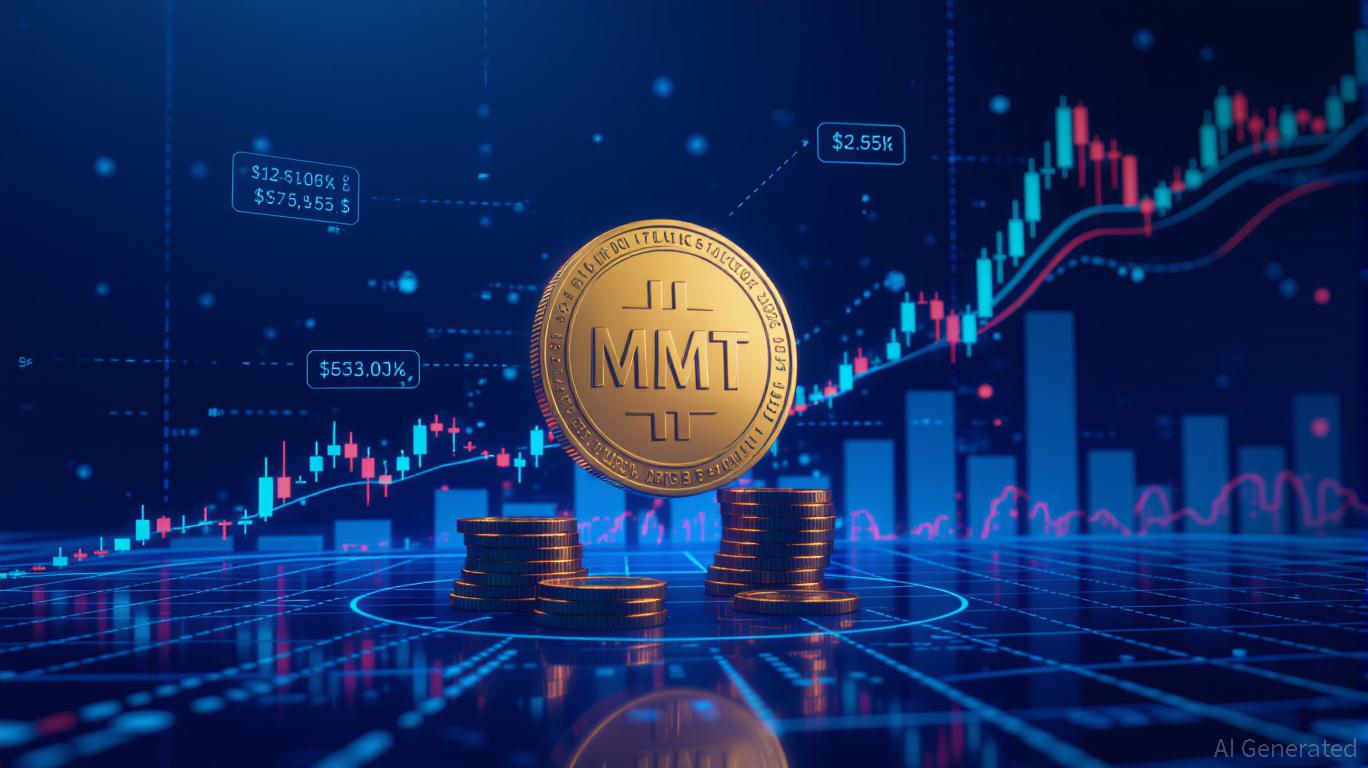Reevaluating MMT After Quantitative Easing: Insights from the Latest Rise in MMT Price Forecasts and Their Implications for Market Outlook
- Post-QE markets show MMT's influence on digital assets, with MMT token surging 1,300% driven by Binance airdrops and institutional buying. - Q2 2025 saw fixed-income markets shift to traditional risk-return metrics as MMT's dominance waned amid normalized term premiums and higher debt compensation demands. - Investors rotated to small-cap/value equities and AI infrastructure amid fiscal stimulus, while elevated valuations emphasized diversification and fundamentals. - MMT remains relevant for sovereign f
MMT’s Shifting Impact on Fiscal Policy and Digital Assets
The fundamental beliefs of MMT—particularly the view that governments with control over their own currency can run deficits without facing default—have sparked debate in both academic and policy arenas for years. Yet, its real-world impact has grown notably in 2025, especially within the digital asset sector.
However, the dominance of MMT appears to be fading as more traditional economic models regain prominence. In the second quarter of 2025, the fixed-income sector
Investor Strategies in the Wake of QE
The third quarter of 2025 provides insight into how investors have adjusted to the post-QE landscape. After the Federal Reserve reduced rates by 25 basis points in September and hinted at two more cuts before year-end, market participants have revised their approaches to reflect a weakening job market and ongoing inflation
Stock markets have experienced a significant shift, with leadership moving from large-cap growth companies to small-cap and value stocks, reflecting a broader hunt for undervalued assets amid increased fiscal stimulus

The
MMT
Token Rally: Hype or Fundamentals?
The Momentum (MMT) token’s dramatic 1,300% increase in 2025 has captured widespread interest, but its price movement seems to be driven more by external factors than by MMT’s theoretical foundation. Bitget’s analysis attributes the surge to Binance airdrops, institutional investments, and broader trends in crypto speculation—demonstrating the speculative tendencies of digital assets in the post-QE era
This gap between theory and real-world outcomes prompts important questions for investors. Can MMT’s concepts serve as a reliable guide for asset allocation in markets increasingly shaped by algorithms, regulatory changes, and economic uncertainty? As of 2025, the answer appears to be mixed: MMT remains a valuable lens for understanding government fiscal policy, but it offers limited accuracy when forecasting the movements of individual tokens or stocks.
Conclusion: Integrating MMT with Traditional Investment Approaches
The post-QE period calls for a well-rounded investment approach—one that recognizes MMT’s impact on economic policy but bases portfolio decisions on established risk management practices. For investors, this means managing the volatility of speculative assets like the MMT token while capitalizing on fiscal momentum in areas such as AI infrastructure and small-cap stocks. For policymakers, it highlights the importance of aligning MMT-inspired fiscal actions with long-term growth goals, ensuring that expansive measures do not unintentionally create asset bubbles or drive up inflation.
As financial markets continue to change, the relationship between MMT and investor behavior will remain a critical topic. The latest surge in MMT price forecasts is not just a sign of theoretical enthusiasm, but also an indicator of how investors are navigating the complexities of the post-QE environment.
Disclaimer: The content of this article solely reflects the author's opinion and does not represent the platform in any capacity. This article is not intended to serve as a reference for making investment decisions.
You may also like
The Iceberg Phenomenon: Unseen Dangers of AI’s Labor Force Surface Across the Country
- MIT's Iceberg Index reveals AI could replace 11.7% of U.S. jobs ($1.2T in wages), impacting sectors like finance and healthcare beyond tech hubs. - The tool maps 151M workers across 923 occupations, highlighting hidden risks in routine roles (e.g., HR, logistics) versus visible tech layoffs. - States like Tennessee and Utah use the index for reskilling strategies, while C3.ai partners with Microsoft to expand enterprise AI solutions. - Despite C3.ai's market expansion, its stock faces volatility, reflect
Where Saving Animals and Supporting People Come Together: The Gentle Barn's Comprehensive Approach
- The Gentle Barn, a California-Tennessee sanctuary, merges animal rescue with human emotional healing through acupuncture, mobility aids, and therapeutic interactions. - Its volunteer programs and $75 season passes support financial sustainability while fostering compassion between humans and rescued animals like turkeys and hoofless goats. - The nonprofit's holistic model attracts attention as a case study in combining veterinary care with mental health initiatives, despite scalability challenges in nonp

XRP News Today: With Tether and USDC under examination, RLUSD from the UAE stands out as a regulatory-compliant stablecoin option.
- Ripple's RLUSD stablecoin received ADGM approval as a regulated fiat-referenced token in Abu Dhabi, enabling institutional use in payments and treasury management. - Pegged 1:1 to the USD with NYDFS oversight, RLUSD ($1.2B market cap) offers compliance-driven alternatives to USDT/USDC amid global regulatory scrutiny. - UAE's ADGM-DIFC regulatory framework positions the region as a crypto innovation hub, with Ripple expanding partnerships through Zand Bank and Mamo fintech . - The approval aligns with UAE

ZK Atlas Enhancement: Driving Institutional Embrace Amid the Blockchain Scalability Competition
- ZKsync's Atlas Upgrade solves throughput bottlenecks with Airbender RISC-V zkVM, enabling 15,000+ TPS at $0.0001 per transaction. - Modular ZKsync OS reduces gas fees by 70% since 2023, enabling real-time financial applications while maintaining regulatory compliance. - Deutsche Bank and UBS test ZKsync for asset tokenization, highlighting its institutional appeal through privacy-preserving ZK features and sub-second finality. - Upcoming Fusaka upgrade aims to push TPS to 30,000 by December 2025, but reg
